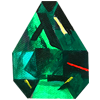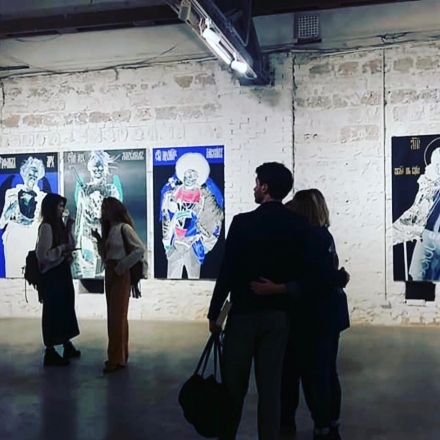How would you describe your technique?
I would call it academicism. I don’t mean the painting tradition, as learnt in school, even though it is important. (This is what Kabakov was talking about). An academic school of painting teaches us the craft. The artist should be able to paint “inside” the canvas, but not just on its surface.
In my case we are talking about academic manner as the principle of building the project. A work of art should be syncretic. It is full only when it doesn't lack both the myth (non-verbal philosophy), and aesthetics. It is not necessary for an art object to appear to be "perfect" as an aesthetic category. "Sublime" and "disgusting" are no less valuable for art.
What inspires you to create and why?
Inspirations envelop us all the time. You are either sensitive to them or not. Much depends on where you are working. For one of my series I was working in the New York studio where Dad died a month before. It was not easy, but I did it deliberately as an experiment on my perception. It really added to the creative forces. It was an elusive moment of reincarnation, though marked by sadness.
What is currently inspiring you artistically?
Now I live in Kiev, Ukraine. And of course the momentous events of the past winter (revolution and continuing military confrontation) I give birth to ideas for future projects. But I do not want these to be just a momentary reflection. Art is not about emotions and ethnography; it’s about reaching into the very soul of something and rethinking it.
What have been the landmarks in your art to date?
I chose painting of all types of media. It has sacrality. Pure work with the surface of canvas is so exciting. But now I`m delving into the work with space: installation, light boxes and other. I`m interested in principle of exposure of the canvas as an art object out of the surface I want to "take away" painting from the walls and give it to the air.
I also work a lot with text in my art. I think this is a tribute to the Moscow school of conceptualism. The visual range should be integrated into the linguistic.
Which works are you most proud of?
I think when I start to be proud of my work I might begin to “die” professionally. I prefer to call it affection. The series I am fondest of is “Piece of material” about the lost meaning of words and texts. Parts of bodies are pulled out from flaps of fabric. What is a “piece of material” in this case? Is it the human flesh, a piece of cloth, a piece of art, as the material embodiment of the underworld, or the canvas itself? Individuality of consciousness deprives the word of a single sense. It is only a " ghost of square" by Bacon. Juggling meanings leads from the universe to a piece of cloth, which, in essence - a rag.
Can you tell us about your next projects?
I am working on a new project, the working title for which is “Form”. It’s an appeal to the Aristotelian form. It is about the mimetic essence of art. The project brings together almost all types of media - an installation of paintings depicting sculpture moulded from live models. The sculpture is a white gypsum head of an African American man encrusted with diamonds. During the performance it will be broken down, thereby becoming a separate work of video art.
Diamonds (in memory of father`s style «gemism») reinforce the concept of form and at the same time emphasize brittleness of the gypsum flesh and of our lives. The process of cutting turns a raw gemstone into a diamond. Our bodies are gypsum and souls are diamonds.
How do you see yourself in the future?
Last year taught me not to think too far ahead. We do not decide how to change our art; art changes us.
























